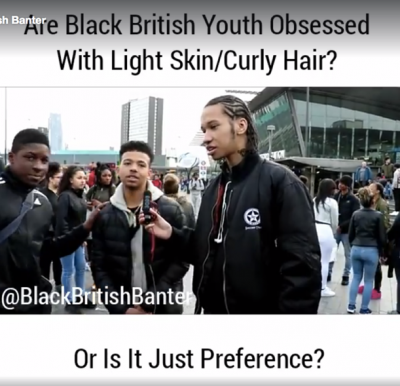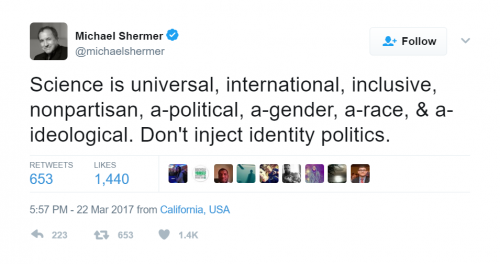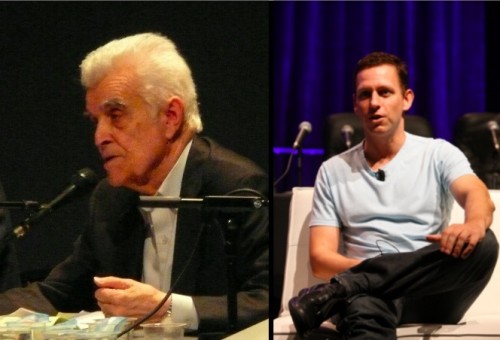 A mere 2 minutes and 19 seconds in length, the video Are Black British Youth Obsessed with Light Skin/Curly Hair. Or is it just Preference?” is a compilation of snippets from “person on the street” interviews, conducted in the environs of two shopping centers and a commuter railway station in east London (more on this later).
A mere 2 minutes and 19 seconds in length, the video Are Black British Youth Obsessed with Light Skin/Curly Hair. Or is it just Preference?” is a compilation of snippets from “person on the street” interviews, conducted in the environs of two shopping centers and a commuter railway station in east London (more on this later).
The interviewer is a roving Internet reporter going by the handle of VanBanter, whose YouTube channel boasts over 85,000 subscribers. VanBanter is a tall, svelte, black Briton of around 16, himself light skinned, whose voluminous hair in the clips is either styled in cornrows, or pulled back in a low Afro puff, the black version of the “man bun.”
The interviewees are black boys, ostensibly between the ages of 12 and 17, of a wide spectrum of skin colors and hair textures. The single question VanBanter asks all of them is, “What kind of girls are you into?” On occasion, he phrases it as, “What type of girls do you slide into?” Two token girls are asked the same question about boys. All interviewed say they like “light skins.” Some add “curly hair,” clearly meant as a qualifier in opposition to “kinky,” not straight, hair texture. Hence, palpably, one can infer that light-skins are more favoured than any other colors at the place. Most of the interviewees are filmed standing in pairs or small groups of friends who support their responses with interjections, gestures, or general glee.
The video was first uploaded on June 1st to the Facebook page of Black British Banter. Over that weekend, it received a million views, over 6k likes (2.6k neutral thumbs-up expressing interest, 1.2k crying emojis, 1.1k angry ones, 546 laughing ones, 467 wows, and 62 loves), 5k comments, and 8,000 shares.
I myself could not stop viewing it. The comments far outstretch the bounds of personal preference, to which we all have an undisputable right. Instead, they defend a centuries-old global regime of negating not only the beauty, but very humanity, of people with dark skin, especially women. “No black t’ings, like my shoes n’ shit!” says one very more...











.jpg)